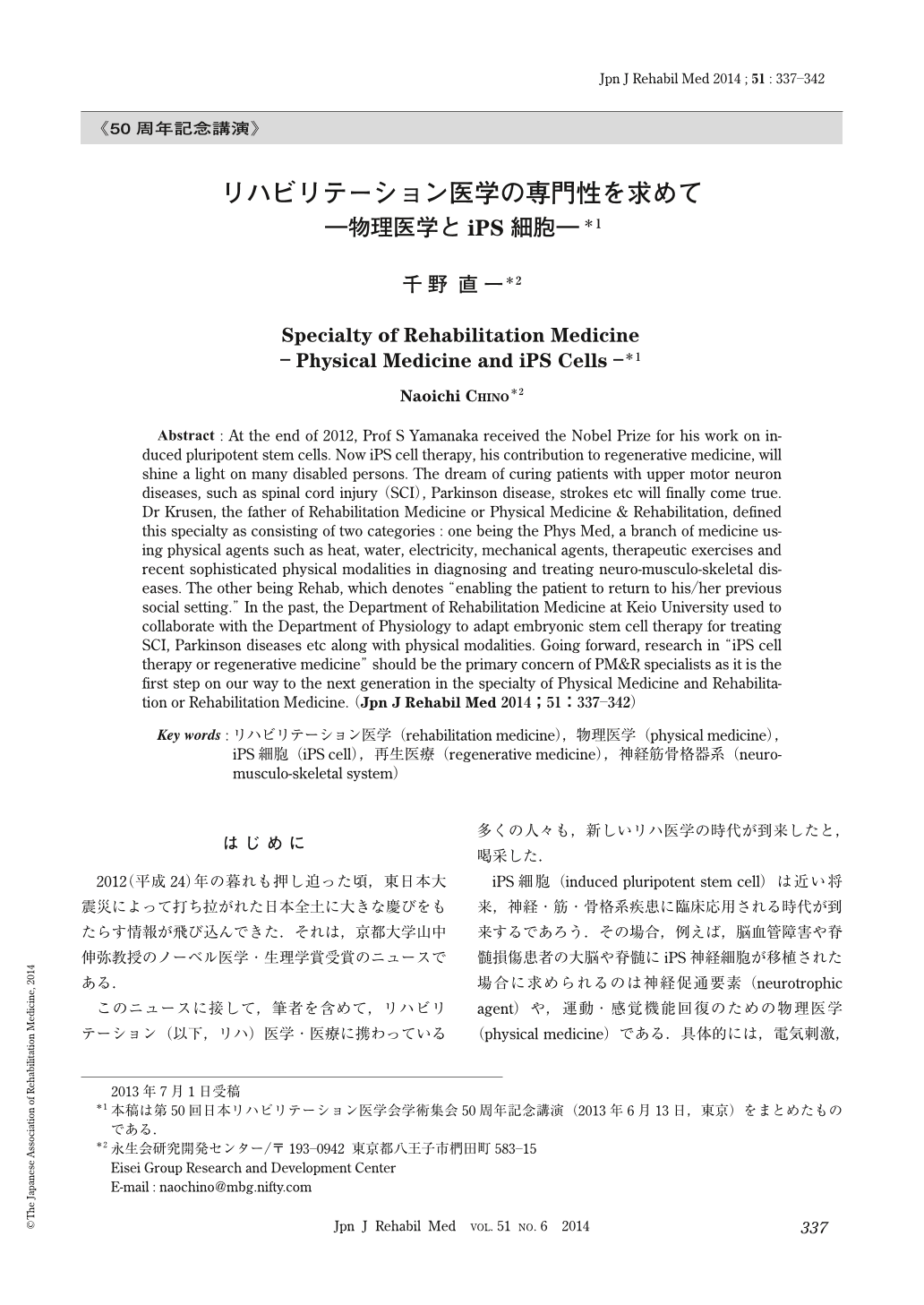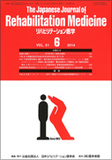Japanese
English
- 販売していません
- Abstract 文献概要
- 1ページ目 Look Inside
- 参考文献 Reference
はじめに
2012(平成24)年の暮れも押し迫った頃,東日本大震災によって打ち拉がれた日本全土に大きな慶びをもたらす情報が飛び込んできた.それは,京都大学山中伸弥教授のノーベル医学・生理学賞受賞のニュースである.
このニュースに接して,筆者を含めて,リハビリテーション(以下,リハ)医学・医療に携わっている多くの人々も,新しいリハ医学の時代が到来したと,喝采した.
iPS細胞(induced pluripotent stem cell)は近い将来,神経・筋・骨格系疾患に臨床応用される時代が到来するであろう.その場合,例えば,脳血管障害や脊髄損傷患者の大脳や脊髄にiPS神経細胞が移植された場合に求められるのは神経促通要素(neurotrophic agent)や,運動・感覚機能回復のための物理医学(physical medicine)である.具体的には,電気刺激,磁気刺激,運動療法など,いわゆる,物理療法(physical modality)であり,機能回復の診断・治療効果の評価には筋電図・神経伝導検査などが必須となる.
Abstract : At the end of 2012, Prof S Yamanaka received the Nobel Prize for his work on induced pluripotent stem cells. Now iPS cell therapy, his contribution to regenerative medicine, will shine a light on many disabled persons. The dream of curing patients with upper motor neuron diseases, such as spinal cord injury (SCI), Parkinson disease, strokes etc will finally come true. Dr Krusen, the father of Rehabilitation Medicine or Physical Medicine & Rehabilitation, defined this specialty as consisting of two categories : one being the Phys Med, a branch of medicine using physical agents such as heat, water, electricity, mechanical agents, therapeutic exercises and recent sophisticated physical modalities in diagnosing and treating neuro-musculo-skeletal diseases. The other being Rehab, which denotes “enabling the patient to return to his/her previous social setting.” In the past, the Department of Rehabilitation Medicine at Keio University used to collaborate with the Department of Physiology to adapt embryonic stem cell therapy for treating SCI, Parkinson diseases etc along with physical modalities. Going forward, research in “iPS cell therapy or regenerative medicine” should be the primary concern of PM&R specialists as it is the first step on our way to the next generation in the specialty of Physical Medicine and Rehabilitation or Rehabilitation Medicine.

Copyright © 2014, The Japanese Association of Rehabilitation Medicine. All rights reserved.


